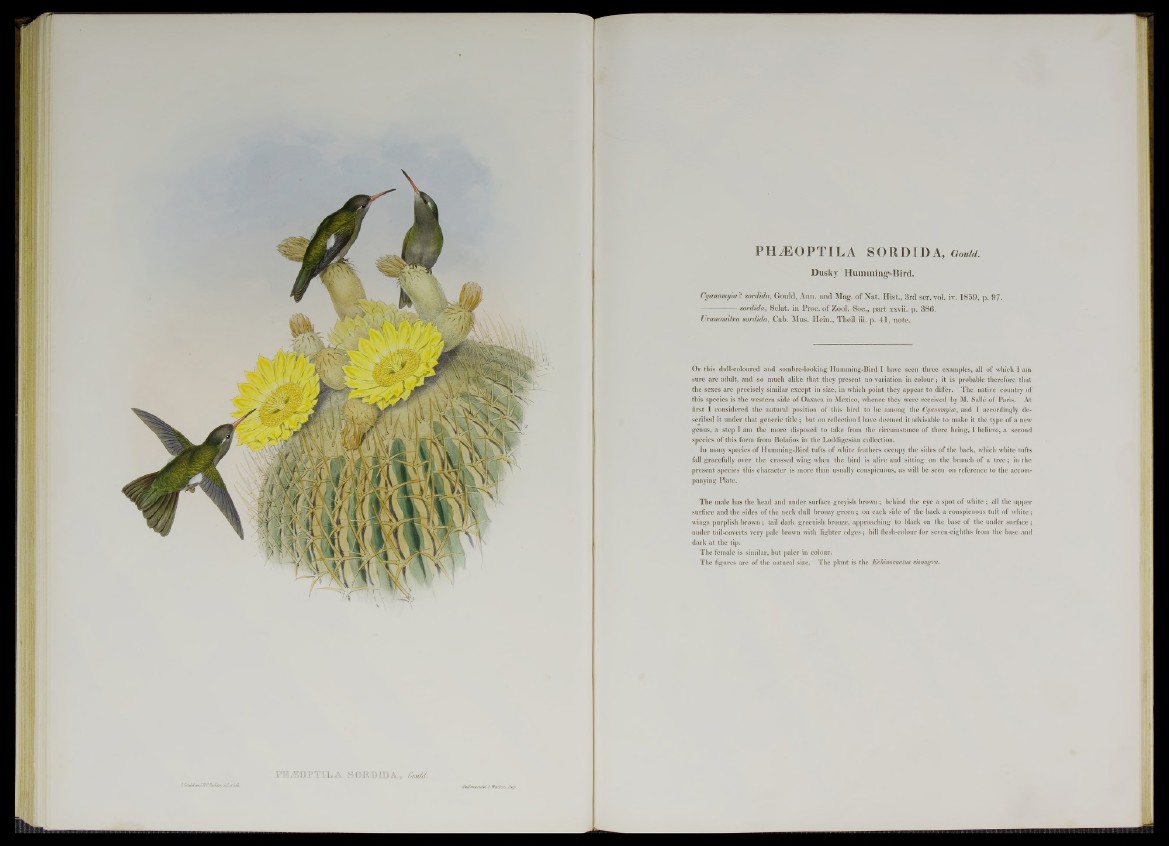
PHÆOPT1LA SORBIBA, Could.
PHÆOPTILA SORDID A, Gould.
Dusky Humming-Bird.
Cyanomyia ? sordida, Gould, Ann. and Mag. o f Nat. Hist., 3rd ser. vol. iv. 1859, p. 97.
sordida, Sclat. in Proc. o f Zool. Soc., p a rt xxvii. p. 386.
Uranomitra sordida, Cab. Mus. Hein., Theil iii. p. 41, note.
Of this dull-coloured and sombre-looking Humming-Bird I have seen three examples, all of which I am
sure are adult, and so much alike that they present no variation in colour; it is probable therefore that
the sexes are precisely similar except in size, in which point they appear to differ. The native country of
this species is the western side of Oaxaca in Mexico, whence they were received by M. Salle of Paris. At
first I considered the natural position of this bird to be among the Cyanomyice, and I accordingly described
it under that generic title; but on reflection I have deemed it advisable to make it the type of a new
genus, a step I am the more disposed to take from the circumstance of there being, I believe, a second
species of this form from Bolanos in the Loddigesian collection.
In many species of Humming-Bird tufts of white feathers occupy the sides of the back, which white tufts
fall gracefully over the crossed wing when the bird is alive and sitting on the branch of a tree; in the
present species this character is more than usually conspicuous, as will be seen on reference to the accompanying
Plate.
The male has the head and under surface greyish brown; behind the eye a spot of white ; all the upper
surface and the sides of the neck dull bronzy green; on each side of the back a conspicuous tuft of white;
wings purplish brown ; tail dark greenish bronze, approaching to black on the base of the under surface;
under tail-coverts very pale brown with lighter edges; bill flesh-colour for seven-eighths from the base and
dark at the tip.
The female is similar, but paler iu colour.
The figures are of the natural size. The plant is the Echinocactus visnagra.